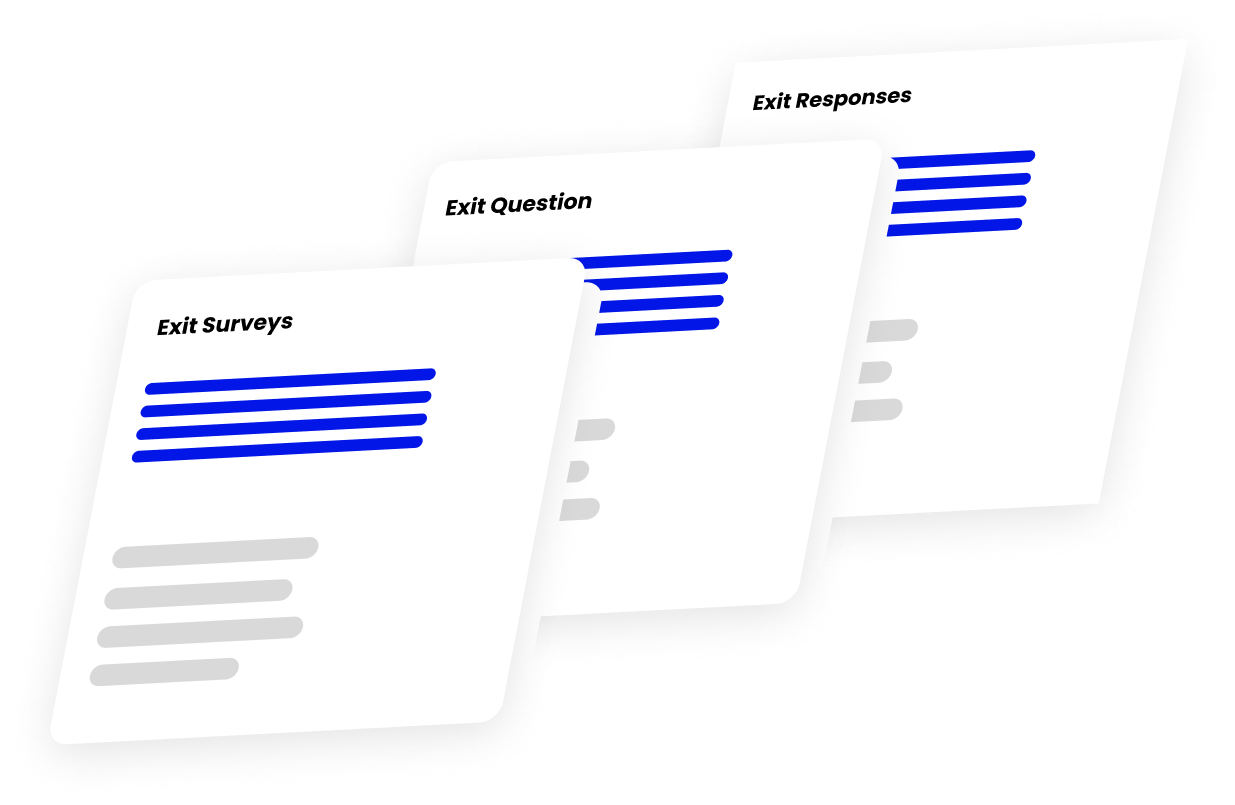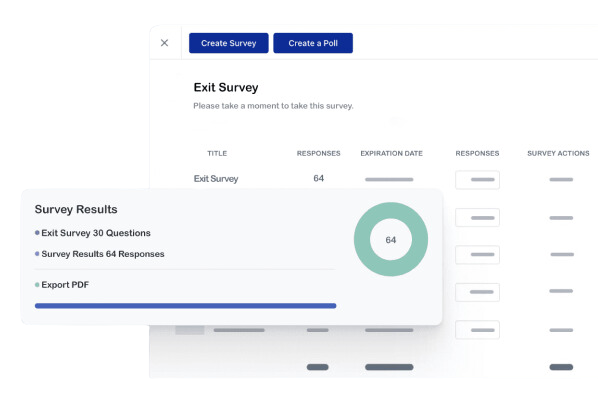Exit Surveys
An Exit Survey is a questionnaire given to employees leaving a company. It is used to gather feedback about the employee’s experience while working at the organization. The purpose of the Exit Survey is to learn more about what the employee liked and disliked about the company and their job and to gather insights that can help improve the company and the work environment.
What Is An Exit Survey?
A Departure Questionnaire is a set of questions given to individuals leaving the agency. The goal of this survey is to gather input from former employees about their time with the organization. This type of survey can provide valuable insights into areas where the agency may be able to improve.
The survey should include questions about job satisfaction, departure reasons, frustrations, and the effectiveness of an organization’s policies or procedures. The work environment, the agency’s culture, supervisors, and members of the police force, and if they would recommend the agency to others. Agency can use this information to improve their working environment.
Why Should It Be Done?
An Exit Survey can help determine the reasons behind police officers leaving the organization. It can offer insight into areas that need to be improved in order to retain future employees and provide a better overall experience.

Exit Surveys should be done:
- To get an understanding of why officers are leaving the agency.
- To identify any potential areas of improvement within the agency.
- To help retain employees who may be considering leaving.
- To improve communication between leadership and officers.
- To identify any issues that may be causing officer dissatisfaction.
- To provide officers with a chance to voice their concerns.
- To improve morale within the police department.
- To identify any training or development needs within the agency.
- To help the agency identify its strengths and weaknesses.
- To provide insights into how the agency can improve its retention rates.
- To help the agency save money by reducing turnover.
- To improve agency's image and reputation.
- To help the agency attract top talent.
- To help the agency identify any potential legal liabilities.
- To help the agency avoid future litigation.
- To help the agency develop more effective policies and procedures.
- To help the agency improve its community relations.
- To help the agency increase officer morale.
- To help the agency retain more officers.
Benefits Of An Exit Survey
There are several benefits to conducting an exit survey:
1. Gathering valuable feedback: Exit surveys allow departing employees to provide honest feedback about their experience with the organization, which can be useful in identifying areas for improvement.
2. Identifying trends: By analyzing the results of multiple exit surveys, organizations can identify trends in the feedback they receive, which can help them make informed decisions about how to improve the employee experience.
3. Improving retention: By identifying common reasons for employees leaving the organization, an exit survey can help organizations take steps to improve retention and reduce turnover.
4. Improving the onboarding process: Exit surveys can help organizations identify any issues that may have arisen during the onboarding process, which can be addressed to improve the experience for future employees.
5. Enhancing the organization’s brand: By actively seeking and addressing the feedback of departing employees, organizations can improve their employer brand and reputation, which can be beneficial in attracting top talent in the future.

Here are a few benefits of conducting an exit survey and what they help determine and identify:
- Understand the reasons behind turnover.
- Provides insights into employee satisfaction.
- Identify retention strategies.
- Improve employee morale.
- Create a positive work environment.
- Reduce turnover.
- Improve communication.
- Identifies training and development needs.
- Better understanding of the impact of company culture.
- Improves recruiting efforts.
- Reduces costs associated with turnover.
- Improves employee engagement.
- Identifies high-risk employees.
- Improves succession planning.
- Assists in understanding the impact of pay and benefits.
- Improves work/life balance.
- Assists in understanding the impact of job stress.
- Identifies areas for process improvement.
- Improves customer satisfaction.
- Improves shareholder value via Exit Survey.


